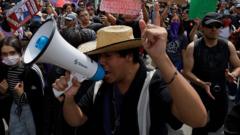In July 2025, after eight rounds of negotiating talks in Washington, Japan and the United States struck a bilateral deal on tariffs, establishing a flat 15% U.S. tariff on Japanese exports. While this outcome was preferable to the initially floated rates of 34% and 24%, it nonetheless marked a significant deterioration from the long-standing 2.5% rate that governed most Japanese exports under previous trade regimes. At their core are there the principles and practices of Most-Favored-Nation treatment under the General Agreement on Tariffs and Trade and later World Trade Organization agreements, which is essential for expansion of international trade and prosperity. Instead, the Donald Trump administration invokes domestic legal instruments, such as Section 232 of the Trade Expansion Act (1962) and Section 301 of Trade Act (1974) to justify unilateral tariffs. The imposition of this new tariff ceiling will undoubtedly erode Japanese exporters’ price competitiveness in U.S. markets, threatening profit margins, investment stability, and long-term viability across sectors deeply integrated into global value chains.
What sets this agreement apart is not only its economic consequences but the method and context in which it was reached. President Donald Trump’s unilateralist approach to trade negotiations and the absence of transparency in the deal’s final terms reveal a coercive diplomatic style that weaponizes economic asymmetries. While Trump often frames such agreements as demonstrations of sovereign strength and transactional success, his method resembles a form of “gangster diplomacy”—a practice rooted in exploiting dependency and inducing compliance through veiled threats and overwhelming leverage.
The purpose of this article is to analyze the 2025 U.S.-Japan tariff agreement within the broader framework of bilateral security relations and evolving global power dynamics. Far from being an isolated economic episode, the agreement illuminates the structural subordination embedded in Japan’s postwar alliance with the United States. By reframing the tariff issue within the logics of hegemonic security architecture, this study seeks to contextualize Japan’s constrained autonomy and interpret the political functions of economic coercion in U.S. alliance management.
The most striking feature of the tariff deal is the absence of any jointly issued public documentation. Unlike the recent U.S. trade negotiation with the United Kingdom, which culminated in a detailed joint statement or a quasi-legal memorandum (USTR, 2025), to be soon followed by one with the European Union (Corlin, 2025), the Japan-U.S. deal produced no co-authored communiqué. Instead, conflicting interpretations quickly emerged. U.S. officials framed the agreement as a major victory, citing new Japanese arms purchases, expanded agricultural quotas, and massive investment pledges. Tokyo, however, did not concur on many of these claims, understanding that they either predated the agreement or were exaggerated beyond recognition (Moriyasu and Satoh, 2025; Yamazaki, 2025①).
Of particular controversy is Washington’s assertion that Tokyo has committed $550 billion in new direct investment in the United States, with 90% of the resulting profits to be allocated to U.S. stakeholders and 10% to Japanese investors. Japanese officials understood that, with the financial commitment consisting of equity investment, loan and loan guarantees, such a profit-sharing arrangement was both procedurally impossible and legally unfounded. The Japanese government cannot dictate private-sector investment decisions, and government-affiliated financial institutions are restricted by statutory mandates and corporate governance rules that preclude preferential treatment of foreign parties in profit distribution (Moriyasu and Satoh, 2025; Yamazaki and Kihara, 2025).
What emerges is a portrait of coercive bargaining, in which ambiguity and asymmetry are not incidental features but strategic tools. Tokyo accepted these nebulous terms not because they served Japan’s economic interests, but because they were perceived as the least damaging option in a context of escalating risk. Protracted negotiations could have triggered even higher tariffs or retaliatory measures. Japan’s leadership chose ambiguity as a form of defensive concession—a tacit recognition of the structural constraints it faces within the alliance.
The uneven and opaque nature of the tariffs deal evokes historical memories of “unequal treaties” imposed on Japan during the late Tokugawa period. In the mid-19th century, Western imperial powers, exploiting Japan’s military and legal inferiority, secured concessions that stripped Japan of tariff autonomy and legal sovereignty. The Meiji government made it a national priority to revise these treaties, achieving formal equality under international law only after four decades of diplomacy and domestic reform.
The fact that recent senior Japanese political leaders, particularly factional bosses in the ruling Liberal Democratic Party, such as former prime ministers Taro Aso, Yoshihide Suga, and Fumio Kishida, have acquiesced a deal so structurally ambiguous and susceptible to unilateral reinterpretation invites scrutiny. Why do the successors of Meiji-era statesmen, once obsessed with sovereign equality, now reluctantly live with a negotiation framework that echoes past subordination? The answer lies not in domestic weakness per se, but in the systemic dynamics of alliance politics under U.S. hegemony. In a world where economic decisions are increasingly subordinated to strategic imperatives, and where trade can be used as a blunt instrument of discipline within alliances, the appearance of sovereignty often masks profound dependency.
A deeper understanding of Japan’s constrained behavior in trade talks requires revisiting the post-W.W.II security architecture that shapes its foreign policy. Specifically, the 1954 Mutual Defense Assistance (MDA) Agreement (MOFA, n.d.①), which is subsidiary to the 1952 U.S.-Japan Security Treaty (MOFA, n.d.➁) and superseded by the 1960 U.S.-Japan Mutual Security Treaty (MOFA, n.d.➂), remains pivotal. The MDA Agreement institutionalizes Japan’s role as a subordinate security partner, obligated to align its economic and military resources with U.S. strategic objectives. This reflects the asymmetric power relationship between the occupying United States and occupied Japan, since demilitarized Japan immediately after Japan’s re-independence in 1952 could not but rely on the sole U.S. security guarantor, the basic structure of which has essentially continued until today.
Article 8 of the MDA Agreement mandates that Japan make the fullest possible contribution to the collective defense of the “free world,” calibrated to its national capabilities. Surprisingly, the significance of the security regime has been almost always overlooked and de-emphasized in politico-economic analysis, including trade and tariff issues. In the facade of equal footing and reciprocity, the Agreement sets asymmetrical power relationship in which Tokyo shall serve Washington security needs, while Washington can provide Tokyo with arms and military technologies at its discretion. This provision underpins a wide range of economic commitments: Japan’s exceptional Host Nation Support (HNS) expenditures, its strategic Official Development Assistance (ODA) flows, and its financial contributions to post-conflict reconstruction in alignment with U.S. foreign policy.
Japan’s financial support for U.S. forces far exceeds that of any other ally. As early as 2002, Japan was covering 75% of U.S. basing costs on its territory—nearly three times the contribution made by Germany, the second-largest host nation (Sankei Shinbun, 2016). During the Cold War, Tokyo used ODA to support Washington’s global posture, often directing aid to strategically critical but politically unstable partners, including Egypt and Pakistan (Yasumoto, 1986; Orr, 1990). In the aftermath of the Gulf War, Japan imposed a special domestic tax to fund a $13 billion contribution to Kuwaiti reconstruction, due to its constitutional limitations on military deployment (Nakanishi, 2011).
These examples are not anomalies; they reflect a long-standing pattern of economic compliance rooted in the alliance framework. The 2025 tariff agreement is but the latest expression of this structural reality. Japan’s trade policy, far from being an autonomous domain, remains embedded in a broader architecture of security-dependent governance. This is because Japan relies on U.S. extended nuclear deterrence and because Japan, as a non-nuclear state facing existential threats from China and North Korea, cannot realistically decouple from U.S. security umbrella. This dependency grants Washington immense leverage in non-security negotiation, as any resistance on trade or economic issues risks triggering latent security anxieties.
While the asymmetry of the alliance explains much of Japan’s constrained behavior, it does not fully account for the peculiar nature of the Trump administration’s tariff diplomacy. The imposition of the 15% tariff must also be read through the lens of domestic U.S. politics. Trump’s use of tariffs is not merely about correcting trade imbalances; it is part of a broader ideological campaign against globalism (Matsumura, 2025➂). Trump has consistently framed tariffs as weapons in a larger political war against globalism—a posture that pits nationalist “America First” priorities against multilateral commitments. In this schema, allies such as Japan become collateral damage in a domestic struggle for ideological supremacy. The tariff, then, is a disciplinary tool aimed not only at foreign economies but at globalist elites, both at home and abroad (Matsumura, 2025➂).
This dynamic has intensified since the inauguration of Prime Minister Shigeru Ishiba, whose administration has reinforced the globalist trajectory charted by his predecessor, Fumio Kishida. Both leaders have championed value-based diplomacy, robust support for Ukraine, and alignment with the liberal international order championed by the Biden administration. In contrast, Trump’s second term has been marked by a strategic reassertion of anti-globalist rhetoric, protectionist economic policies, and transactional diplomacy (Matsumura, 2025①; Matsumura, 2025➁; Matsumura, 2025➂).
Seen in this light, the tariff talks with Japan served a dual function: they allowed Trump to reinforce his domestic anti-globalist credentials while reminding foreign allies of the costs of ideological nonalignment. Japan’s geostrategic indispensability means it cannot be punished militarily, but it can be pressured economically. The tariff thus becomes a calibrated instrument of alliance discipline—painful but not fatal. Japan’s unique position among U.S. allies further explains why it has become a key target in Trump’s tariff offensive. Amid the economic stagnation and political fragmentation afflicting Europe—exacerbated by Ukraine war expenditures, the boomerang effects of sanctions on Russia, and global inflation driven by energy and commodity prices—Japan has emerged as perhaps the last coherent bastion of liberal internationalism.
Whereas the European project has lost much of its integrative momentum, and NATO cohesion has come under strain, Japan continues to present itself as a reliable, value-driven, pro-globalist actor. This makes Tokyo both a vital ally and an ideological outlier in Trump’s worldview. The tariff pressure on Japan, therefore, serves not only economic and political objectives but also symbolic ones: it signals the limits of globalism’s durability even among America’s most committed allies. By leveraging economic pressure without disrupting security cooperation, Trump has managed to discipline Japan’s globalist orientation while preserving its strategic utility. This delicate balancing act underscores the evolving nature of alliance politics in an era of ideological retrenchment and hegemonic realignment.
While President Trump’s negotiation style may appear brutish, even gangster-like in its tactics, its underlying rationale is neither irrational nor unprecedented. What appears as “gangster diplomacy” is better understood as a form of structurally conditioned statecraft—one that exploits asymmetrical dependencies within a hierarchical alliance system. The 2025 tariff deal between Japan and the United States is emblematic of a larger transformation in global politics: the reassertion of hard power, the erosion of multilateral norms, and the resurgence of coercive diplomacy among allies. Japan’s acquiescence reveals the strong inertias and, perhaps, enduring relevance of the post-W.W.II security regime and the political costs of strategic dependency.
As Zbigniew Brzezinski once observed, Japan remains a de facto “security protectorate” of the United States (Brzezinski, 1997, p. 173), despite having regained formal sovereignty in 1952 through the conclusion of the San Francisco Peace Treaty and being the world’s third largest economy. The recent tariff talks underscore the contemporary validity of that characterization. In an age of intensified great-power rivalry and ideological fragmentation, the short-term challenge for Japan is how to navigate its complex role as both a cornerstone of U.S. hegemony and a residual champion of globalism and liberal internationalism—without being crushed in the crossfire. As the evolving world order clearly heads from the declining U.S. hegemony to a multipolar balance-of-power system, the mid- and long-term challenge for the country is how to make a gradual transition after hegemony and liberate itself from being an American security protectorate.
Bibliography
Brzezinski, Zbigniew (1997), The Grand Chessboard: American Primacy And its Geostrategic Imperatives, New Yorks: Basic Books.
Corlin, Peggy (2025, July 31), “The EU and US have shaken hands on a trade deal, but what’s to come?” Euro News, https://www.euronews.com/business/2025/07/31/the-eu-and-us-have-shaken-hands-on-a-trade-deal-but-whats-to-come
Matsumura, Mashiro (2025①,May 23), “Japan at the Crossroads: Rethinking Value-Based Diplomacy in a Fracturing World Order,” World Geostrategic Insights, https://www.wgi.world/japan-at-the-crossroads-rethinking-value-based-diplomacy-in-a-fracturing-world-order/
Matsumura, Masahiro (2025➁, May 25), “Japan’s Ukraine Policy at a Crossroads: Time for a Strategic Reset,” World Geostrategic Insights, https://www.wgi.world/japans-ukraine-policy-at-a-crossroads-time-for-a-strategic-reset/
Matsumura, Masahiro (2025➂ July 9), “Tariffs as Weapons in Trump’s Partisan Strife,” World Geostrategic Insights, https://www.wgi.world/tariffs-as-weapons-in-trumps-partisan-strife/
Moriyasu, Kean and Ryohtaroh Satoh (2025, July 23), “US, Japan agree trade deal, lowering threatened Trump tariff to 15%.” Nikkei Asia, https://asia.nikkei.com/economy/trade-war/trump-tariffs/us-japan-agree-trade-deal-lowering-threatened-trump-tariff-to-15
MOFA [Japan Ministry of Foreign Affairs](n.d.①), U.S.-Japan Mutual Defense Assistance Agreement, https://www.mofa.go.jp/mofaj/gaiko/treaty/pdfs/A-S38(3)-251.pdf
MOFA (n.d.➁)), U.S>Japan Security Treaty of 1953, https://avalon.law.yale.edu/20th_century/japan001.asp
MOFA (n.d.➂), U.S.-Japan Mutual Security Treaty of 1960, https://www.mofa.go.jp/region/n-america/us/q&a/ref/1.html
Nakanishi, Hiroshi (2011, December 6), “The Gulf War and Japanese Diplomacy,” Nippon.Com, https://www.nippon.com/en/features/c00202/
Orr, Robert (1990), The Emergence of Japan’s Foreign Aid Power, New York: Columbia University Press.
Sankei Shimbun (2016, May 25), “’Anpo Tada-Nori-Ron wa’ honto? Churyu-Keihi-Futan, Jitsu wa Sekai demo Totsushutsu. Beigunjinn wo Nihon no Youheini ni
Suru kinanoka (安保ただ乗り論」は本当?駐留費負担、実は世界でも突出…米軍人を日本の傭兵にする気なのか)”, https://www.sankei.com/article/20160525-QIXWXC3MKVIK5PCOKCT6BXLQHU/
USTR [United States Trade Representative](2025, May 8), General Terms on for the United States and the United Kingdom of Great Britain and Northern Ireland Economic Prospertity, https://ustr.gov/sites/default/files/files/Press/fs/US%20UK%20EPD_050825_FINAL%20rev%20v2.pdf
Yamazaki, Jun (2025, July 25), “US, Japan differ on details of tariff deal, with no clear start date,” Nikkei Asia, https://asia.nikkei.com/economy/trade-war/trump-tariffs/us-japan-differ-on-details-of-tariff-deal-with-no-clear-start-date
Yamazaki, Makiko, and Tamiyuki Kihara (2025, July 25), “Japan says profits from US investments in trade deal to be shared according to contributions,” Reuters, https://www.reuters.com/business/finance/japan-says-profits-us-investments-trade-deal-be-shared-according-contributions-2025-07-25/?utm_source=chatgpt.com
Yasumoto, Dennis T. (1986), The Manner of Giving: Strategic Aid and Japanese Foreign Policy, Lexington Books.

 Movie
Movie 3 weeks ago
133
3 weeks ago
133 






![Presidents Day Weekend Car Sales [2021 Edition] Presidents Day Weekend Car Sales [2021 Edition]](https://www.findthebestcarprice.com/wp-content/uploads/Presidents-Day-Weekend-car-sales.jpg)



 English (United States)
English (United States)